Since hitting the supplement scene in 2019, AstroFlav has established a reputation for being one of the most consumer-oriented brands around. They're great at getting customer feedback and running with it.
This year, we're finding that nobody in the industry does more than AstroFlav when it comes to continually refining and tinkering with their products. Their primary values are trust, compassion, integrity, and results.
This translates to 100% transparency with fully disclosed labels, the use of premium ingredients, and most importantly, ASTROnomically great FLAVors. In that vein, AstroFlav really lives up to their name, especially with their recent IsoMix and VeganMix releases.
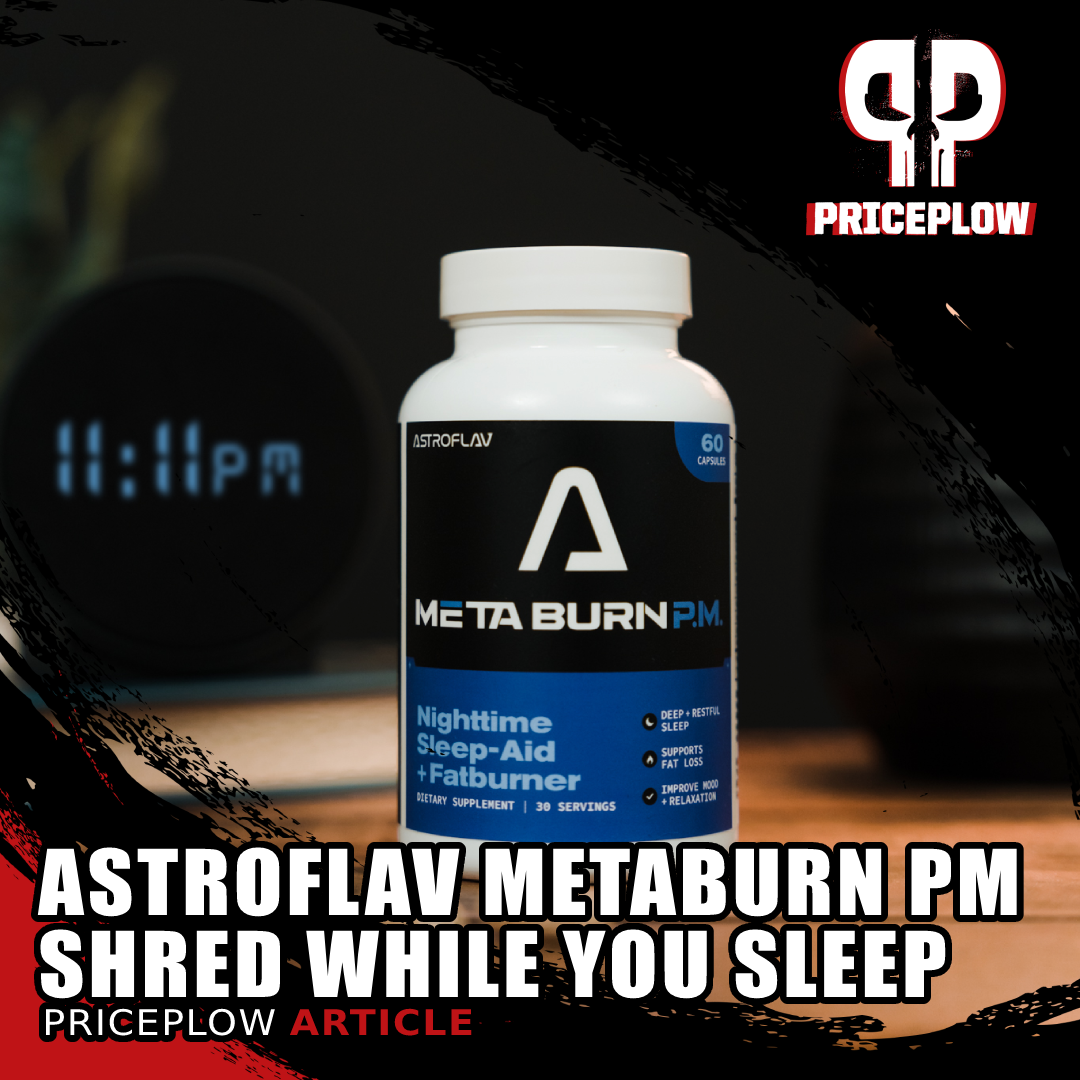
AstroFlav MetaBurn PM is a hybrid fat burning sleep aid that consistently focuses on brown fat activation and non-shivering thermogenesis in just a two-capsule dose!
But today, we're talking about capsules - no flavor needed here. It turns out that they're just as good at formulating these types of supplements, too.
Introducing AstroFlav MetaBurn: A Fat-Burning Sleep Aid
A lot of ingredients that promote sleep don't really taste too great. When a company with a strong flavor game like AstroFlav comes to play in the sleep-aid category, we always sit up and pay attention.
Instead of trying to overwhelm a powder on the flavor front, they're instead making a hybrid supplement that doubles as a fat-burning sleep aid: MetaBurn PM.
Nighttime: A perfect time to burn extra fat
Combining these two categories into a single product makes a ton of sense when you think about it. It's suggested that we're able to burn more fat at night when we're asleep (through the breath, no less[1]), thanks to the fact that insulin levels naturally fall during sleep.[2]
The natural drop in insulin during sleep makes it a great point of leverage for amplifying fat loss – your body is primed to lose fat when asleep. After all, fat oxidation grinds to a halt when either blood glucose or insulin levels are high,[3,4] so let's take advantage of the times when they're destined to come down. Sleep is, after all, a forced fast of sorts.
Meanwhile, sleep is so important for fat burning and healthy-body composition that restoration of adequate sleep has been proposed as a treatment for obesity.[5] And sleep disturbances have even been shown to interfere with weight loss.[6]
With that said, let's get ready to jump into MetaBurn PM's mechanisms to boost sleep and fat loss even more, but first, check PricePlow for news and deals:
AstroFlav MetaBurn PM – Deals and Price Drop Alerts
Get Price Alerts
No spam, no scams.
Disclosure: PricePlow relies on pricing from stores with which we have a business relationship. We work hard to keep pricing current, but you may find a better offer.
Posts are sponsored in part by the retailers and/or brands listed on this page.
This area is reserved for Team PricePlow's upcoming videos.
Subscribe to our channel and sign up for notifications so you catch it when it goes live!
Ingredients
In a single 2-capsule serving of MetaBurn from AstroFlav, you get the following:
-
MitoBurn (L-β-Aminoisobutyric Acid) – 500 mg
As we dig into this formula, we'll spot an incredible trend towards WAT-to-BAT conversion and non-shivering thermogenesis!
NNB Nutrition's MitoBurn is pure L-β-Aminoisobutyric Acid, abbreviated as L-BAIBA, which is a myokine that we call "the exercise signal".
Myokines are non-protein amino acids that function like hormones in your body. Hormones are messenger molecules that provide instructions to cells regarding how to function in the context of your whole body. So we sometimes refer to myokines like L-BAIBA as "muscle messengers" – they give your muscle cells information they need to regulate muscle growth and decay.
Your body naturally produces L-BAIBA in response to exercise, which triggers the conversion of valine, an essential amino acid, into L-BAIBA.[7]
L-BAIBA then signals to your muscle cells that exercise is underway,[8] which triggers a whole host of metabolic adaptations that help your body withstand and recover from intense exercise. These adaptations include increased fat burning, bone protection, and more.
In other words, L-BAIBA is the molecule that actually triggers most of the body's beneficial responses to workouts.
Unsurprisingly, no sooner was L-BAIBA discovered than enterprising sports scientists began to wonder whether exogenous or supplemental L-BAIBA could simulate exercise, even in the absence of an actual workout. Incredibly – the answer seems to be yes.
Taking L-BAIBA as a supplement has been shown to drive the conversion of white adipose tissue (WAT) to brown adipose tissue (BAT), a process that can increase metabolic rate by upregulating a process called non-shivering thermogenesis.[9] This takes us down the next rabbit hole:
White adipose tissue (WAT) vs brown adipose tissue (BAT)
To understand the significance of WAT-to-BAT conversion, we'll talk a little bit about how the two differ.
Together, WAT and BAT account for all the adipose tissue in your body. These two types of body fat serve very different purposes: Your body uses WAT for long-term energy story, which can be metabolized for fuel when calorie intake approaches zero.[10]
On the other hand, BAT is not used by your body for fuel at all. It's where non-shivering thermogenesis takes place. In non-shivering thermogenesis, your body burns cellular energy substrates (like glucose and fatty acids) for heat, which is one of the body's primary mechanisms for maintaining body temperature in the face of cold exposure.[10]
This ultimately contributes to your body's total daily energy expenditure (TDEE), defined as the total number of calories your body burns in a day. A higher TDEE, thanks to non-shivering thermogenesis, translates into faster weight loss[11,12] (assuming you don't eat more to compensate for the caloric deficit it creates).
One of the really awesome things about BAT is that it doesn't just burn fat for heat – it can use glucose as well, meaning that having lots of BAT can improve your blood glucose levels and lead to better metabolic health, even if you haven't lost any body fat.[13]
Non-shivering thermogenesis mechanism of action
So how does non-shivering thermogenesis burn calories for heat?
The answer is increased mitochondrial density. Compared to WAT, BAT has way more mitochondria.[14]
MitoBurn (L-BAIBA) has flipped the fat burner niche on its head by supplying more of this exercise-based signaling molecule to dieters
In fact, this is where the names "white" adipose tissue and "brown" adipose tissue come from. When viewed under a microscope, white adipose tissue, being largely devoid of mitochondria, has a pale appearance because light passes through it. BAT on the other hand, being full of mitochondria compared to WAT, blocks more light and has a dark brown color.
So the process of converting WAT to BAT entails driving the creation of new mitochondria inside existing WAT. That's what L-BAIBA does: it drives mitochondrial biogenesis in WAT.
These aren't just ordinary mitochondria though. The kind of mitochondria your body grows in BAT are equipped with a protein called uncoupling protein 1 (UCP1), which short-circuits the electron transport chain. This leads the electrical potential in your mitochondria to radiate heat in exactly the same way that a short-circuited electrical circuit arcs.[15]
The name uncoupling protein 1 refers to the fact that UCP1 decouples mitochondrial activity from the demands placed upon your body, enabling your mitochondria to burn significantly more calories without a corresponding increase in physical activity.
Thanks to its ability to burn off excess cellular fuel, like glucose and fatty acids, UCP1 upregulation can protect against obesity[16] and increase insulin sensitivity, contributing to better overall metabolic health.
How L-BAIBA converts WAT to BAT
The specific mechanisms of action by which L-BAIBA turns WAT into BAT are upregulation of PGC-1 alpha and PPAR alpha.[9,17]
L-BAIBA research
So that's L-BAIBA theory, but what happens in real-world studies with L-BAIBA?
The research so far indicates that L-BAIBA can:
- Accelerate fat burning[7,9,18-20]
- Increase ketone production[21]
- Convert WAT to BAT[9,20]
- Increase insulin sensitivity and decrease blood glucose levels[7,18,22]
- Decrease inflammation[20]
- Improve cholesterol and triglycerides[7,18]
- Increase bone density[23]
- Enhance kidney function[24]
L-BAIBA mechanism of action
L-BAIBA works by upregulating peroxisome proliferator-activated receptor-gamma coactivator (PGC)-1alpha (PGC-1 alpha) and peroxisome proliferator-activated receptor (PPAR alpha).[25,26]
PGC-1 alpha causes mitochondrial biogenesis.[27]
PPAR alpha actually feeds fatty acids that constitute BAT to your mitochondria.[28]
What’s special about MitoBurn
Although many attempts have been made in recent years to create efficacious BAIBA supplements, getting the right form can be tricky.
For one thing, only the L isomer of BAIBA – as opposed to D-BAIBA or R-BAIBA – has active effects on human metabolism.[7,19]
This is what motivated NNB Nutrition to develop and trademark MitoBurn — a pure, standardized, and stabilized form of L-BAIBA. We wrote a long-form article on this ingredient, so if you want to learn more, mosey on over to BAIBA: Weight Loss Ingredient Generates Exercise in a Pill?!
Now that we have some fat loss mechanisms upregulated, let's get some relaxation and sleep started:
-
Zylaria (Xylaria nigripes, [mycelium], Cuscuta chinensis Extract [seed], Panax notoginseng Extract [root]) – 300 mg
Xylaria nigripes (XN) is a medicinal fungus with a long history in traditional Chinese medicine (TCM), where it's known as Wu Ling Shen. It has antioxidant,[29] anti-inflammatory,[30] and nootropic[31,32] effects, and has traditionally been used by TCM practitioners to treat a wide range of illnesses.
Zylaria is a Xylaria nigripes extract that's shown to provide some sedative and mood-promoting benefits.
Zylaria is a standardized extract of XN designed and trademarked by NuLiv Science. It contains the following bioactive constituents:
-
Sesquiterpenes are a type of terpenoid alkaloid that contains 15 carbon atoms and occur naturally in a huge variety of plants.[33]
These compounds have been shown to protect the cardiovascular system by increasing the body's production of nitric oxide (NO). But the reason we're seeing them used in AstroFlav MetaBurn PM is they also have sedative effects.[33] For this reason, sesquiterpene-rich plants are often used as the source for calming, anxiolytic essential oils. XN has six different kinds of sesquiterpene: nigriterpenes A through F.[34]
-
Fommanoxin has significant anti-inflammatory and nootropic effects.[34]
-
Gamma-amino-butyric acid (GABA) is an anti-excitatory and inhibitory neurotransmitter that promotes rest and relaxation.[35] GABA is the antagonist of glutamate, an excitatory neurotransmitter. As it turns out, XN contains an enzyme called glutamate decarboxylase, which converts glutamate into GABA.[35]
Xylaria nigripes’ effect on sleep
According to one study published by Chinese Pharmaceutical Journal in 1991, mice who were treated with Xylaria were observed to have higher concentrations of GABA and GABA precursors in their blood, both of which go a long way toward promoting restful sleep.[36]
One particularly interesting thing about this study is that the mice also had a higher density of GABA receptors, meaning that in addition to having more GABA, the GABA they had was more active than usual.[36]
In 2010, the Chinese Archives of Traditional Chinese Medicine published a study that found that of a group of subjects who took a Xylaria supplement, 57.5% saw improvements in Pittsburgh Sleep Quality Index (PSQI) scores, a questionnaire designed to quantify insomnia severity.[37]
A 2022 meta-analysis of 19 different placebo-controlled, randomized trials with a cumulative total of 1,850 participants found that Xylaria supplements consistently outperformed placebo controls when it came to improving subjects' PSQI scores.[38] The average effect size in these studies was 2 points,[38] which is a pretty substantial difference on a 21-point scale like the PSQI.
We can help contextualize a 2 point PSQI improvement by explaining that any score over 5 points is considered by sleep scientists to constitute a serious sleep disturbance.[39]
While the authors of the meta-analysis caution that several of the Xylaria studies showed evidence of statistical bias,[38] there's at least one randomized, double-blind, placebo-controlled study showing that the fungi can significantly improve sleep. Published in 2015, this was actually a study on depression that wound up discovering Xylaria's effect on sleep quality can improve depressive symptoms.[40]
Xylaria helps mitigate the cognitive effects of sleep deprivation
Overall quality of life improvements and more from Xylaria! Note that the Wu Ling Group is xylaria.[40]
Insomnia is a truly crippling condition that can affect many aspects of human health and functioning. But arguably, the worst thing insomnia does is interfere with cognitive function. Fortunately for us, there's some good evidence that Xylaria can help protect our brains against the effects of sleep deprivation.
One 2014 study found that sleep-deprived mice who'd taken Xylaria had significantly more cyclic adenosine monophosphate (cAMP)-response element-binding protein (CREB), compared to control mice.[35]
The reason that's important is CREB is crucial for neuroplasticity, which is the process by which your brain physically remodels itself in response to learning. CREB is also important for long-term potentiation, the process of consolidating short-term memories into long-term ones.[35,41]
Thus, the sleep-derived and Xylaria-treated mice did better on cognitive performance tests than sleep-deprived controls.[35]
-
-
Sensoril Ashwagandha (Withania somnifera) Extract (root and leaf) – 240 mg
Ashwagandha is an evergreen shrub with a long history of use in traditional systems of folk medicine all over the world.
It's what we call an adaptogen, a supplement capable of normalizing various biological processes. For instance, if you have too little cortisol, an adaptogen can increase your cortisol production, whereas if you have too much cortisol, the same supplement can decrease your cortisol production.
This paradoxical effect, tailored to each unique individual, is what makes adaptogens such a powerful tool in the supplement consumer's arsenal.
When it comes to ashwagandha specifically, tons of research has borne out its usefulness in managing both physical and mental stress.[42-45]
By modulating the hypothalamic-pituitary axis (HPA),[42] the hormone synthesis pathway responsible for making stress and adrenal hormones,[42] ashwagandha can lower cortisol levels in people with elevated cortisol, and raise testosterone levels in men.[42]
Based on these benefits, you'd probably guess that supplementing with ashwagandha leads to a lower subjective feeling of stress, which is precisely what double-blind, randomized, placebo-controlled studies have consistently found.[43-45]
Insomnia is closely associated with HPA dysfunction and high cortisol levels.[46] So if you're trying to sleep better, ashwagandha may help you get much closer to your goal.[46]
Ashwagandha’s anti-obesity effects
Besides supporting healthy body composition through improving sleep quality, ashwagandha has at least one more anti-obesity mechanism: it helps activate the browning of body fat, the same mechanism we discussed extensively in the MitoBurn section.
Sensoril Ashwagandha uses both the root and the plant for a full spectrum of benefits! Image courtesy Natreon
First, it upregulates mitochondrial function in existing BAT, helping it burn even more calories. Second, it helps fledging adipocytes (fat cells) differentiate into beige cells, which, in the long run, sets your body up for an even higher proportion of brown fat.[47]
Sensoril ashwagandha
Sensoril is a patented ashwagandha extract. What makes Sensoril special is that unlike competing extracts, which generally emphasize one of ashwagandha's bioactive constituents at the expense of others, Sensoril consists of whole leaf and root extract.
Specifically, root-only extracts tend to lack withaferin A, one of ashwagandha's most powerful bioactives. Sensoril doesn't suffer from this problem. It's complete with both withaferin A and withanolides.
-
L-Theanine – 200 mg
Theanine is an amino acid that naturally occurs in tea leaves. We should clarify that by tea we mean Camellia sinensis, the true tea plant that is the source of green tea, oolong tea, and black tea, among others.
Theanine functions as a neurotransmitter in the brain, where it has calming, anxiolytic effects[48-51] due to its ability to inhibit neuronal activity (as opposed to exciting it, i.e. being excitatory like the neurotransmitter glutamate).
Have you ever noticed that despite its caffeine content, a nice warm cup of tea can have a deeply relaxing effect? Theanine is a big part of the reason why.
Theanine improves time to sleep onset and sleep quality
The 200-milligram dose of theanine is standard, and its efficacy has been repeatedly attested to in research literature.[52] This is partly because theanine is GABAergic.[52,53]
In fact, one study found that a daily 200-milligram dose of theanine taken for 4 weeks led to improved PSQI scores by about 2 points.[52] As we discussed in the Zylaria section, that's a significant effect size.
This study, conducted in stressed humans, found that theanine also improved verbal fluency and cognitive performance, partly because of its effects on sleep.[52]
L-theanine can decrease time to sleep onset, helping you fall asleep faster,[54] in addition to improving sleep quality.[52,54]
Theanine’s anti-obesity effects
Theanine has actually been identified by at least one study as an anti-obesity constituent of green tea,[55] as it works synergistically with caffeine and catechins to suppress certain blood biomarkers that are associated with body fat accumulation.
In fact, theanine activates the browning of body fat[56] that we discussed in the MitoBurn section.
This is a powerful mechanism for accelerating fat loss. Anything that drives fat browning is a thumbs-up weight loss ingredient for PricePlow.
-
Rutaecarpine (100 mg)
Now this is an interesting ingredient we want more of our readers to look into!
Rutaecarpine (sometimes spelled rutecarpine) is an alkaloid with one particularly interesting effect: it increases your body's rate of caffeine metabolism. Or, in other words, it decreases the half-life of caffeine in your body.[57]
Possibly the most interesting chart you'll see today. Rutaecarpine helps rats tear through caffeine![57]
How much faster will you metabolize caffeine? One study found that rats who consumed caffeine without rutaecarpine saw peak blood-concentration levels of about 16.7 μg/mL, compared to a peak concentration of only 5.22 μg/mL in rats who got the same dose of caffeine, plus some rutaecarpine.
Peak concentration of caffeine metabolites were roughly the same between both groups, indicating that the difference can be attributed to an increase in the rate of caffeine metabolism.[57]
Another study in rats found that the activity of the CYP1A2 enzymes, which are created in the liver in order to metabolize caffeine, were somewhere between 3 to 7 times as active in rutaecarpine-treated rats, depending on how much time had elapsed since the rutaecarpine treatment.[58]
This is very strong evidence that rutaecarpine can speed up the rate of caffeine detoxification in mammals. We'd love to know the pharmacokinetic effect size in humans, but as far as we're aware, human studies have not been conducted yet.
The CYP1A2 enzymes are responsible for removing a lot of toxic substances besides caffeine, so upregulating them can come with a number of health benefits. Among other things, high CYP1A2 activity is associated with reduced risk of breast cancer,[59] thanks to the role these enzymes play in controlling blood estrogen levels.
In fact, rutaecarpine has a long history of use in traditional Chinese medicine (TCM) for the treatment of liver diseases.[60]
Why caffeine elimination matters
Caffeine's half-life in the human body, on average, is about five hours.[61] This means that if you consume 200 milligrams of caffeine 15 hours before going to sleep (this is a pretty standard pattern of caffeine consumption) you can expect still have about 25 milligrams of caffeine in your bloodstream when you get into bed.
Just one or two cups of coffee is enough to get you 200 milligrams of caffeine, and 25 milligrams is about what you'd expect to find in a cup of green tea. So essentially, even if you stop drinking caffeinated beverages early in the morning, the amount of caffeine in your system at bedtime could be about the same as the amount you'd get from drinking a cup of green tea immediately before bed.
Now, individual caffeine tolerances vary, but it's safe to say that many individuals will struggle to achieve restful sleep under these circumstances. This isn't even considering the fact that many American adults consume significantly more than one or two cups of coffee's worth of caffeine in a day, and generally do not cease to consume caffeine until the afternoon, or even later.
If you're after more restful sleep but don't want to reduce or eliminate your caffeine intake, rutaecarpine can definitely help move the needle in the direction you want. It can help eliminate caffeine from your system significantly faster than you'd be able to naturally.
Rutaecarpine’s anti-obesity effects
Once again, consistent with the pattern of ingredient choice in MetaBurn PM, we see that besides potentially improving sleep quality in caffeine users (most of us), rutaecarpine can have direct anti-obesity effects.
Rutaecarpine has been shown to increase fat browning and drive non-shivering thermogenesis in BAT by activating the energy metabolic pathway, AMP-activated protein kinase (AMPK)/PGC-1α axis.[62]
Rutaecarpine’s safety profile
For some reason, there's occasionally an argument in supplement circles that rutaecarpine can cause liver injury. However, we're not aware of any rigorous evidence showing this to be the case. On the contrary, CYP1A2 upregulation constitutes an improvement in liver function.
In fact, a mouse study found that rutaecarpine actually protected the mice's livers from acetaminophen-induced damage.[25]
A safety study found that the median lethal dose of rutaecarpine in mice is about 65 milligrams per kilogram of bodyweight, the human equivalent of which is about 11 milligrams per kilogram.[63]
Another safety study found that rutaecarpine protected mouse livers against damage from tert-butyl hydroperoxide (t-BHP), another known liver toxin.[64]
Again, we haven't seen safety studies conducted in humans, so it's impossible to say definitively that rutaecarpine is safe for human consumption. But so far, all the actual evidence points the other way: rutaecarpine appears to potentially improve liver health and function. Additionally, note that the dosage here is nowhere near what is tested in the studies cited above.
As always, if you aren't sure whether you can take rutaecarpine, ask your doctor before doing so.
-
Apigenin – 50 mg
Apigenin is a flavonoid that's known for activating benzodiazepine receptors[65] which can produce a state of relaxation and reduce anxiety. In fact, apigenin has been proposed as the molecule behind the sedative effects of chamomile,[66,67] a well-known over-the-counter sleep aid that we've written about multiple times on the PricePlow Blog.
AstroFlav IsoMix - a delicious pure whey protein isolate with "Out of This World Flavor" - is back with six flavors, boosted by MCT and inulin.
Chamomile extracts are sometimes standardized for apigenin, but AstroFlav decided to cut out the middleman and go straight for pure apigenin. We think this is a good idea – chamomile is about 1% apigenin by weight, so to get a 50-milligram dose of apigenin from chamomile, you'd need about 6 grams of chamomile.[67] That's a big enough dose to mostly fill ten veggie caps on its own, which isn't practical for inclusion in a multi-ingredient sleep supplement.
Of course, promoting sleep is only half of the MetaBurn PM value proposition: we also want to torch fat and improve metabolic health, which apigenin can help with as well.
Apigenin is an aromatase inhibitor and reduces estrogen levels
It's somewhat common knowledge that being overweight can increase aromatase activity,[28] an enzyme that converts androgens (like testosterone) into estradiol (a strong form of estrogen).[68]
What's discussed a lot less is that the causal relationship is bi-directional: having elevated estrogen levels can also contribute to unwanted weight gain.[26,27] The estrogen hypothesis of obesity proposes that increased estrogen levels may even be the primary cause of obesity.[27]
With that in mind, it's good to know that apigenin is a strong natural aromatase inhibitor.[69]
Aromatase inhibiting supplements are particularly useful in 21st-century America, as estrogen dominance is a growing concern for supplement consumers. Unfortunately, our environment is increasingly populated by synthetic xenoestrogen compounds, which mimic the action of natural estrogens by activating estrogen receptors, thus contributing to your body's overall estrogen burden.[70]
Of course, apigenin's aromatase-inhibiting effects can't compete with those of pharmaceutical aromatase inhibitors, but a little extra inhibition of aromatase usually can't hurt (it's possible, though unlikely, to have too little estrogen. So talk to your doctor if you aren't sure where you fall on the estrogen spectrum).
Apigenin drives fat browning
We're not done yet. Once again, we have yet another ingredient that can contribute to WAT to BAT conversion. Apigenin has been shown to induce the browning of white fat cells through VEGF-PRDM16 signaling.[71]
-
BioPerine – 15 mg
BioPerine is an extract from black pepper that works to enhance the bioavailability of whatever it's stacked with. Put another way, BioPerine makes every other ingredient in MetaBurn PM more effective than normal. And here, we have three times the usual dose!
The molecule responsible for BioPerine's bioavailability enhancement is piperine,[72] a powerful antioxidant[73] that inhibits stomach enzymes, which ordinarily break down ingredients before they can be absorbed through the intestinal wall.
Piperine’s anti-obesity effects
Piperine also upregulates a protein called glucose transporter 4 (GLUT4), which promotes glucose uptake by your muscle cells. This naturally helps keep blood glucose under control and, as a result, usually improves overall metabolic health. In fact, in mice, GLUT4 overexpression has been shown to reverse insulin resistance and diabetes.[74]
Piperine can also increase insulin sensitivity while removing adipose tissue from the liver.[75] This is a big deal because the untoward accumulation of fat in the liver – known as non-alcoholic fatty liver disease (NAFLD) – is associated with metabolic dysfunction, a condition that can culminate with diabetes and obesity.[76]
Defatting the liver is a potentially powerful way to improve metabolic function in people whose metabolic health has already been compromised. And even if you don't have fatty liver, taking supplements like BioPerine can be a great preventative measure against NAFLD.
Piperine and non-shivering thermogenesis
Yet again, we see an ingredient in MetaBurn PM that prioritizes non-shivering thermogenesis in BAT – piperine has been shown to upregulate UCP1 and increase the amount of energy your body expends in thermogenesis.[77]
-
Melatonin (as MicroActive) – 2 mg
Melatonin is a hormone responsible for regulating your circadian rhythm, which signals to your body that it's time for sleep.[78] Although the body synthesizes some melatonin on its own, research shows that supplemental melatonin can improve sleep onset and quality.
How melatonin secretion interacts with blue light
One of melatonin's functions is to synchronize circadian rhythms – to set your body's internal clock for waking and sleeping.[79] Here's how it works: melatonin is produced by an enzyme called arylalkylamine N-acetyltransferase that's suppressed when we're exposed to a lot of light (i.e., when the sun comes up,[80] which wakes us up in part by suppressing melatonin production).[81]
Melatonin supplementation improves QOS (quality of sleep) and has a relatively high response rate, even at low doses.
The component of sunlight that suppresses melatonin most prominently is the blue light,[82] which makes intuitive sense since the color blue usually dominates our perception of the daytime sky.
Unfortunately, other sources of blue light, such as television screens, computer monitors, and cell phones, can also suppress arylalkylamine N-acetyltransferase.[83] So our gadgets can suppress melatonin production exactly the same way that sunlight does!
Thanks to artificial light and the increasing role that technology plays in daily life, we're all being exposed to unprecedented amounts of artificial blue light, especially in the evening hours when our natural circadian clock is supposed to be winding us down for sleep.
Melatonin supplements, when taken at the right time (i.e., shortly before bed), can help correct this problem. They often improve sleep quality without significant adverse effects, particularly in adults 55 years of age and older.[84]
Other studies have found that supplemental melatonin can even correct severe sleep disturbances.[85,86]
We recommend taking melatonin supplements only at the appropriate time, which is shortly before bed, and combining them with good sleep hygiene practices like limiting your exposure to blue light in the evening.[87]
Melatonin’s anti-obesity effects
Again, like most of the other ingredients in AstroFlav MetaBurn, melatonin has been shown to increase brown fat non-shivering thermogenesis by increasing the expression of UCP1.[88] Spotting a trend in MetaBurn PM?!
No flavor? No problem. AstroFlav Continues to Impress
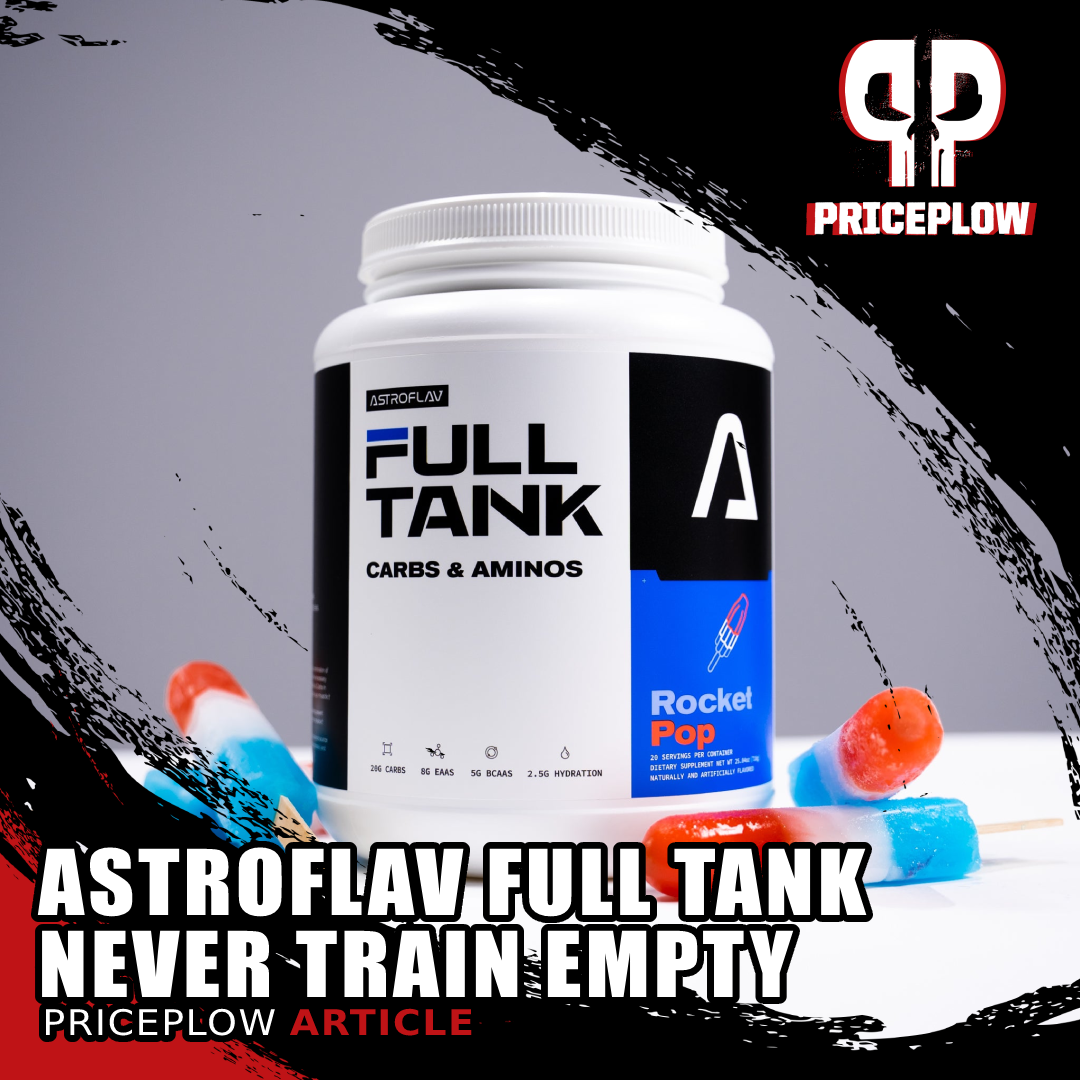
Make your last sets as strong as your first with AstroFlav's Full Tank Intra-Workout Supplement.
The best supplements are organized around a coherent idea, and AstroFlav's MetaBurn PM is a prime example of how this approach can be successful.
Almost all of the ingredients in this product improve sleep quality and accelerate fat burning. And what's even better is that almost all of the fat-burning ingredients act on the same mechanism, which is the upregulation of non-shivering thermogenesis, either by increasing mitochondrial activity in existing brown fat or driving the conversion of white fat to brown fat.
It's clear that AstroFlav put a lot of thought into their ingredient selection. We expect MetaBurn to not only improve the quality of your sleep, but also send your brown-fat activity levels into the stratosphere through the additive effects of multiple ingredients that act on brown fat by complementary mechanisms.
AstroFlav MetaBurn PM – Deals and Price Drop Alerts
Get Price Alerts
No spam, no scams.
Disclosure: PricePlow relies on pricing from stores with which we have a business relationship. We work hard to keep pricing current, but you may find a better offer.
Posts are sponsored in part by the retailers and/or brands listed on this page.

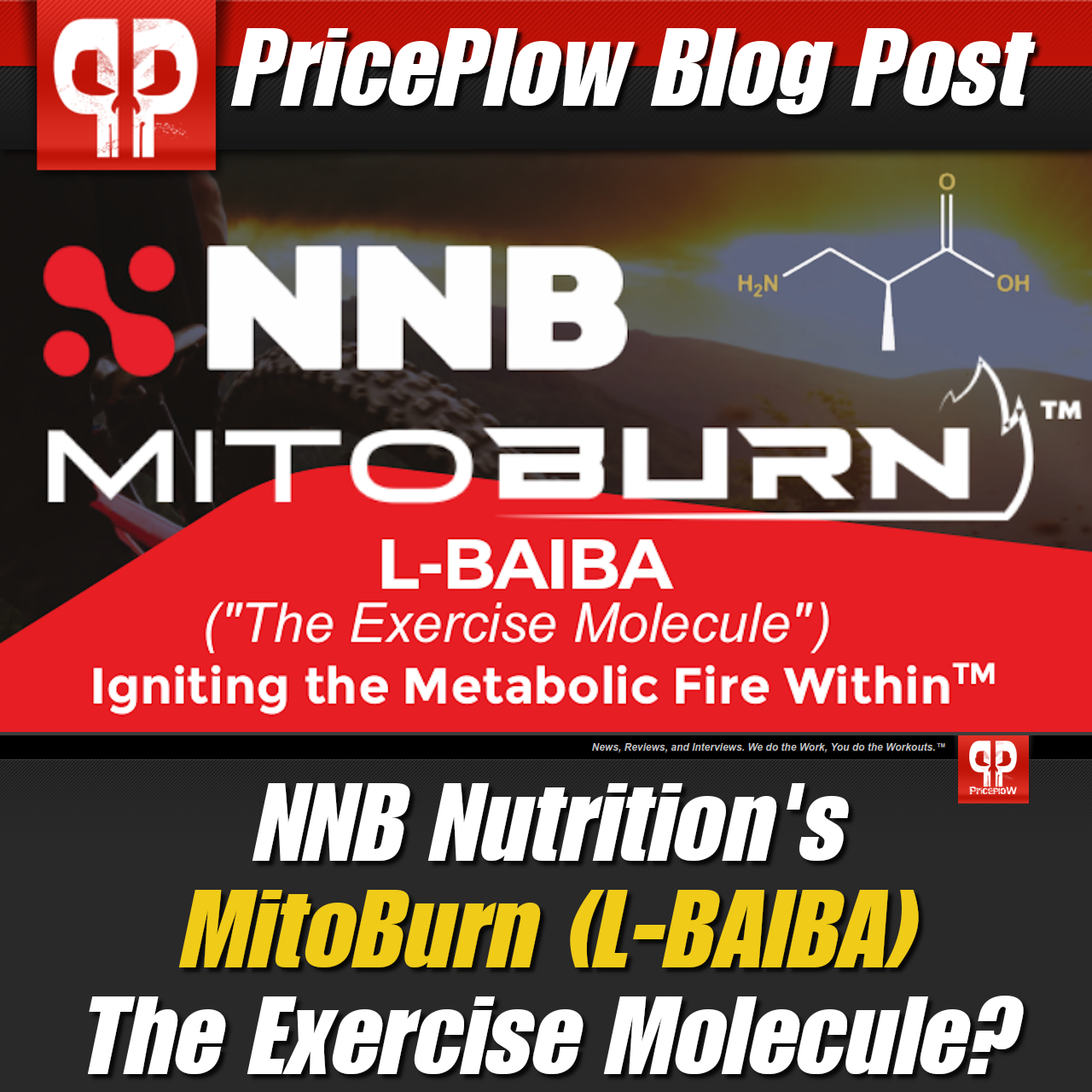
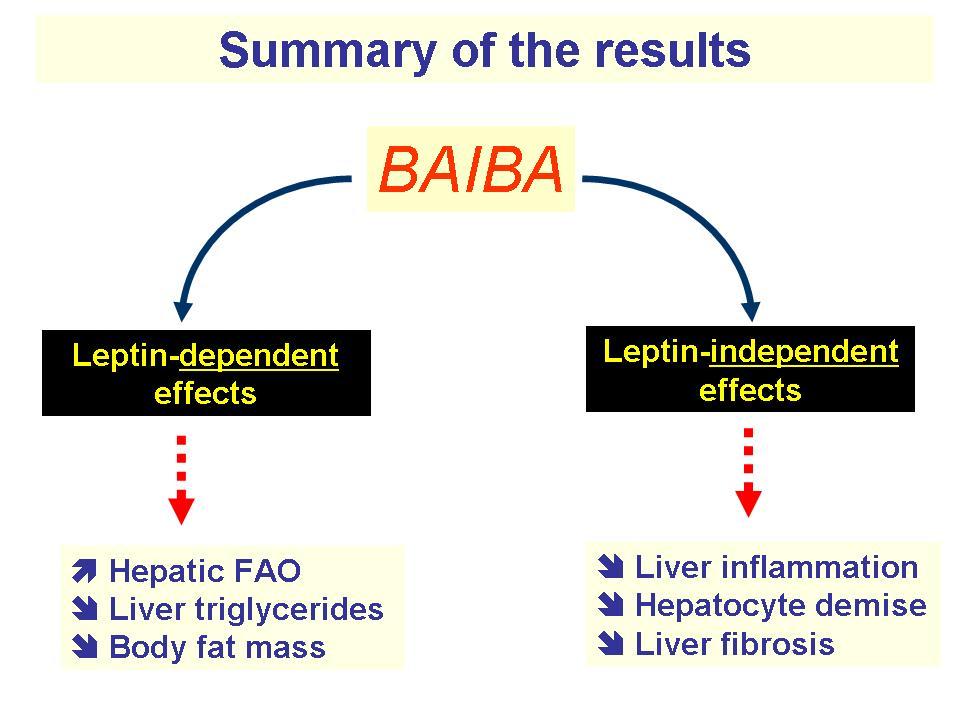



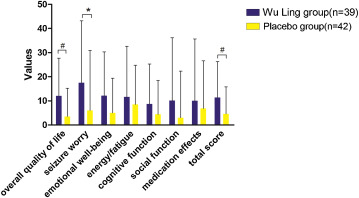


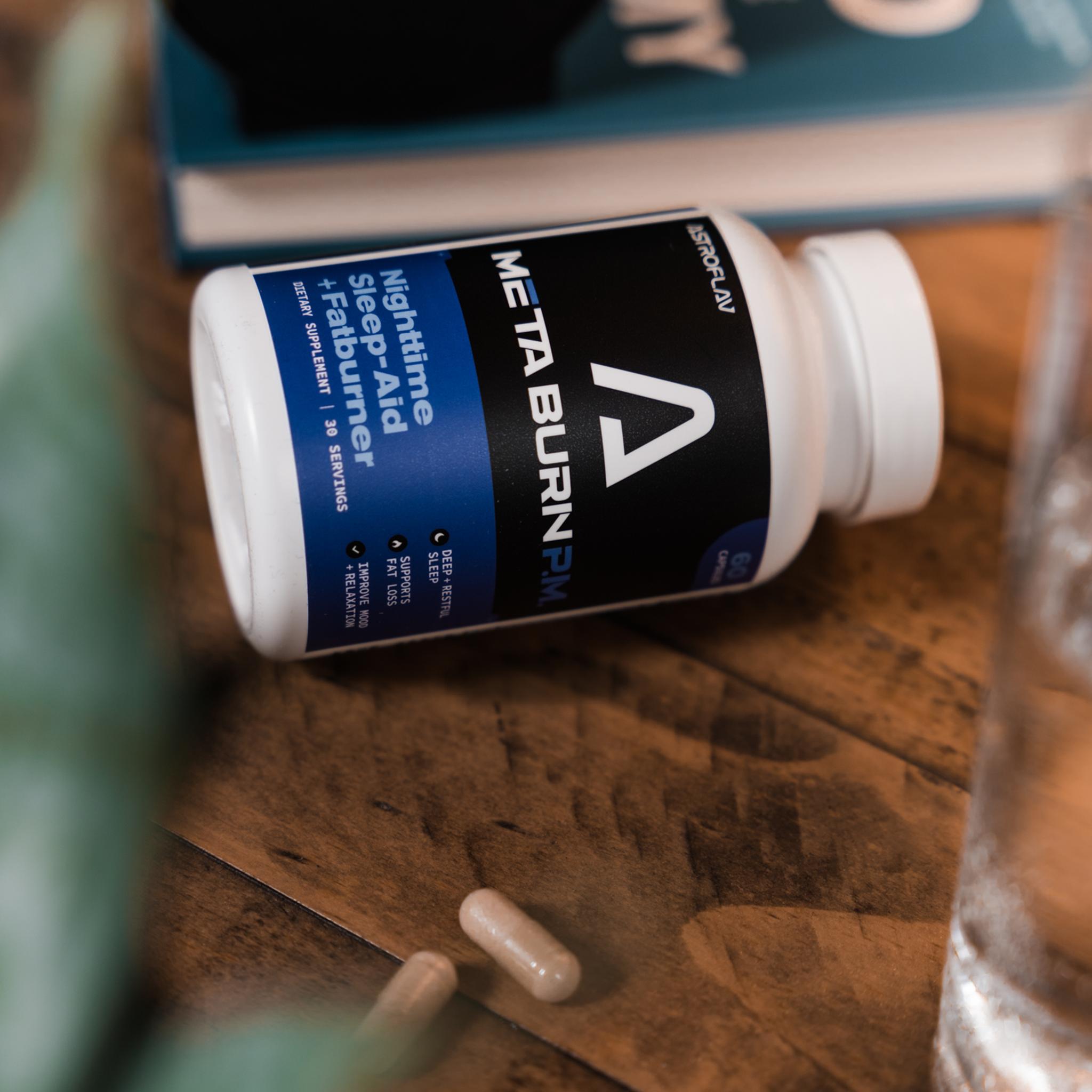

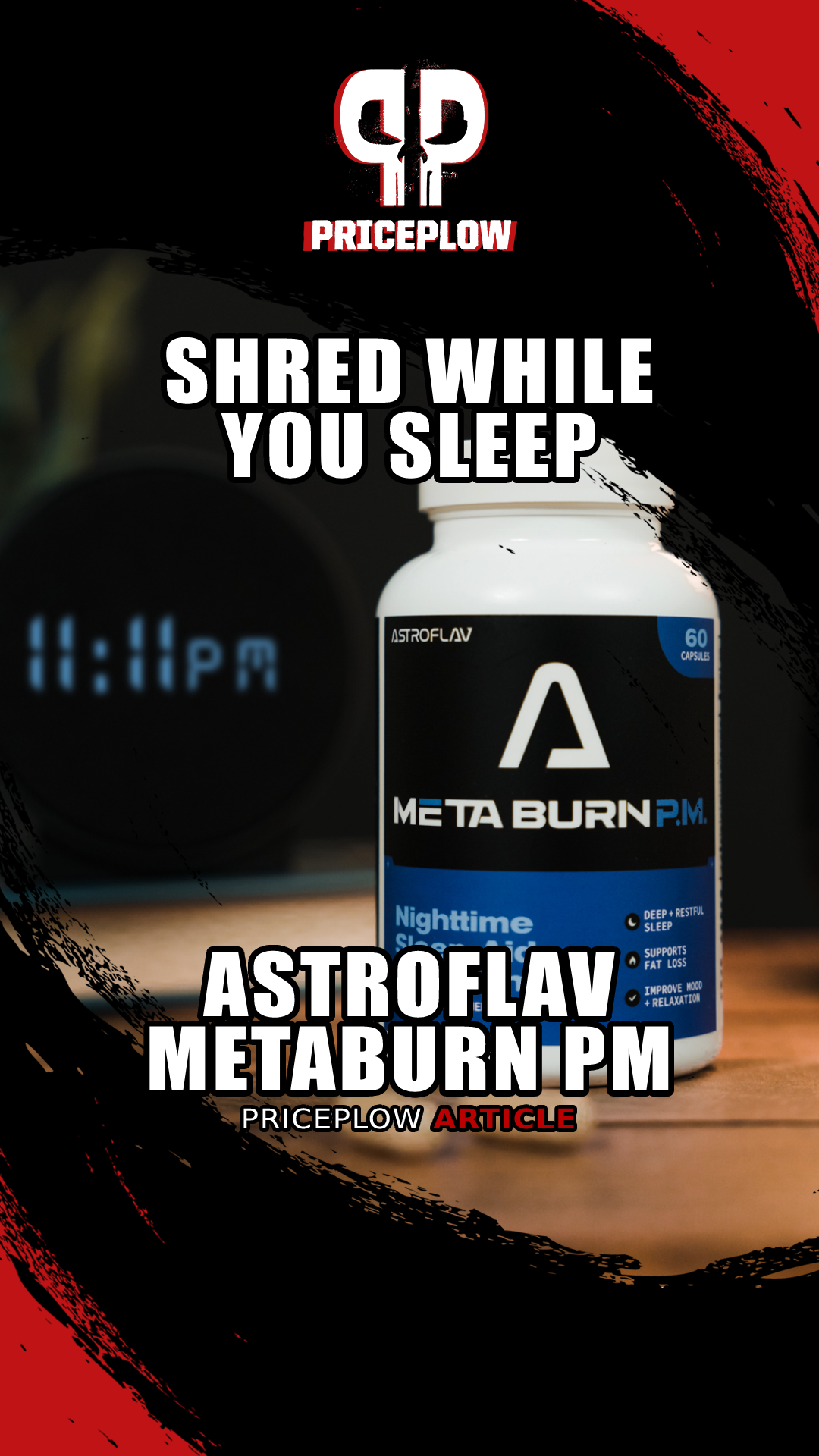
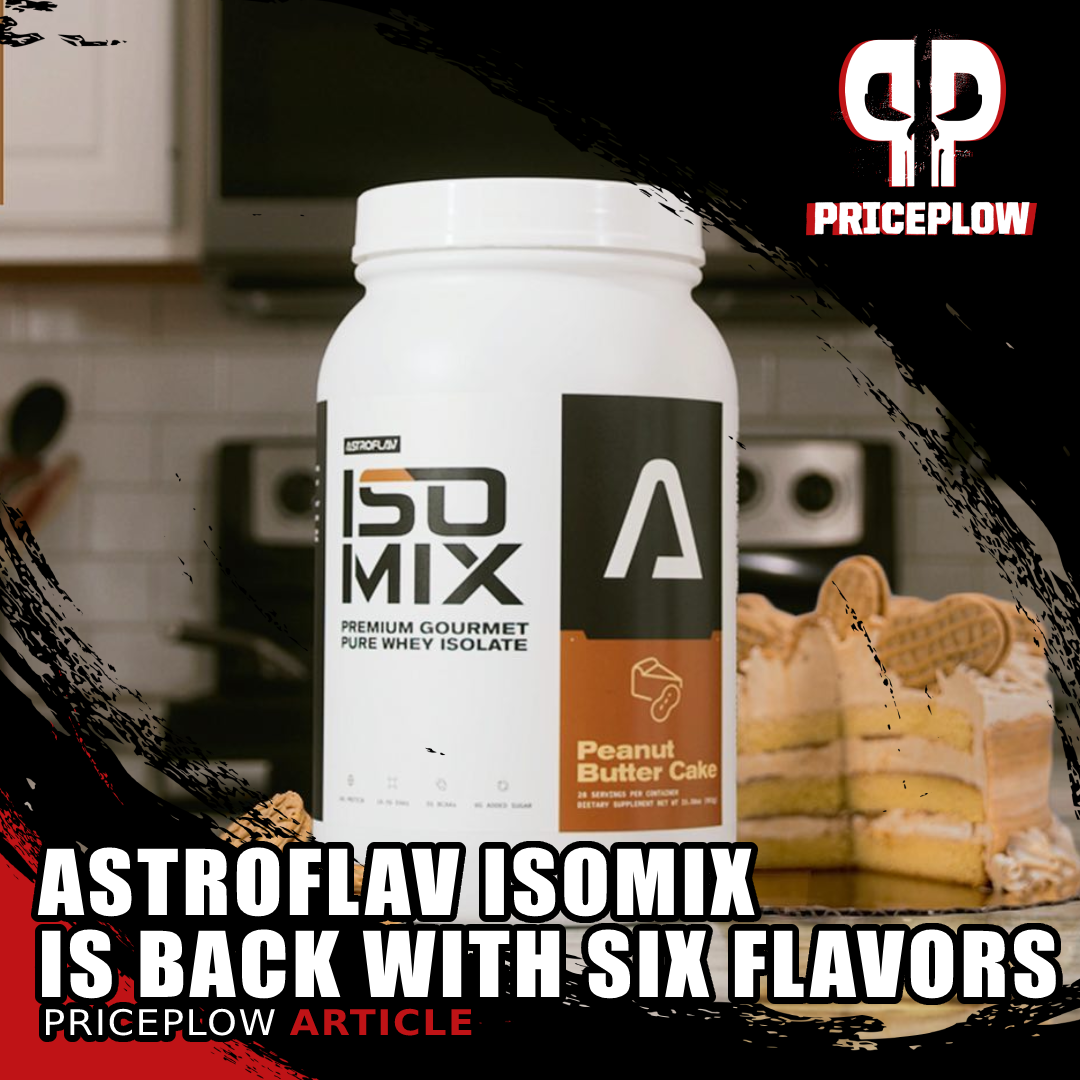
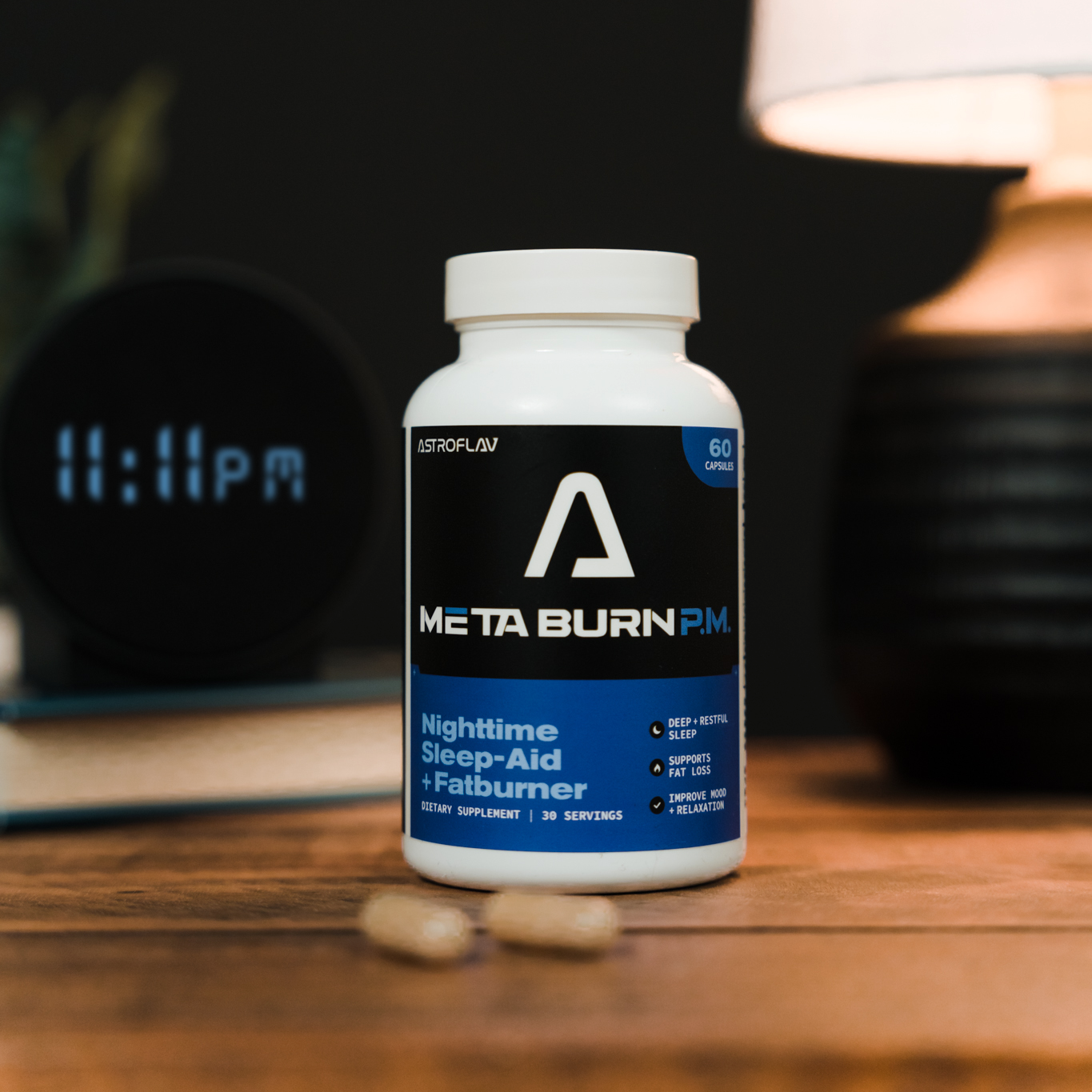
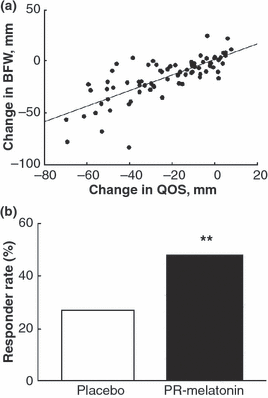



Comments and Discussion (Powered by the PricePlow Forum)